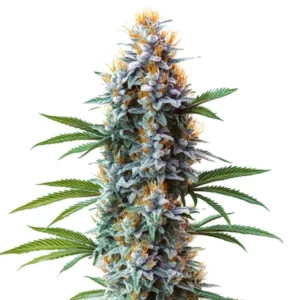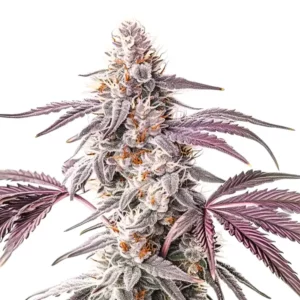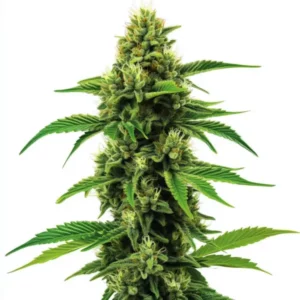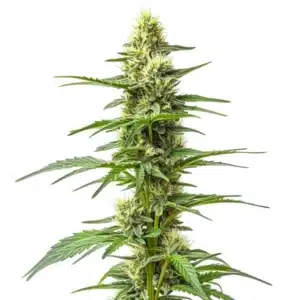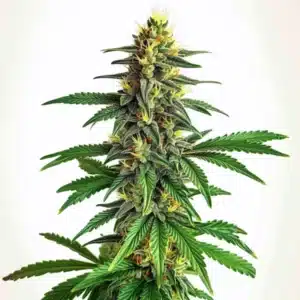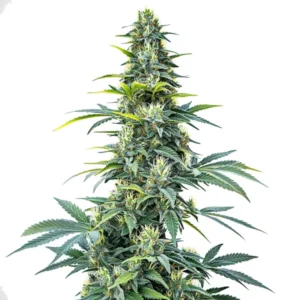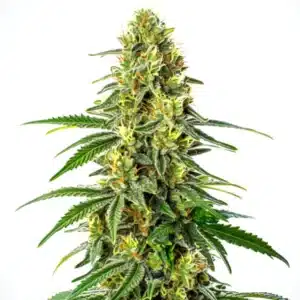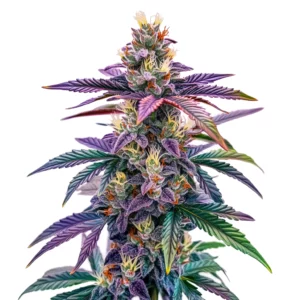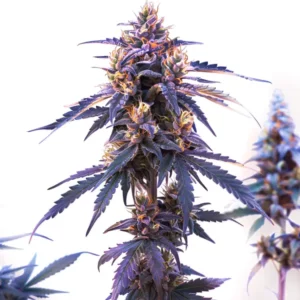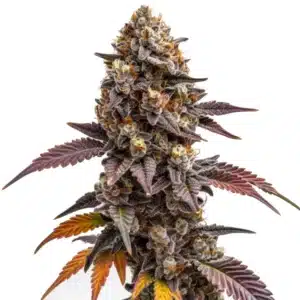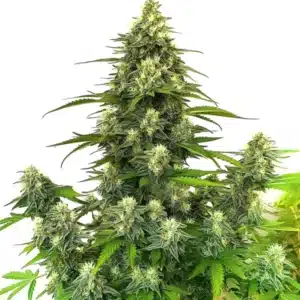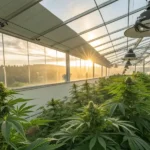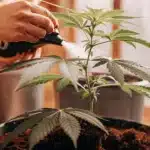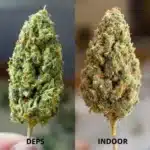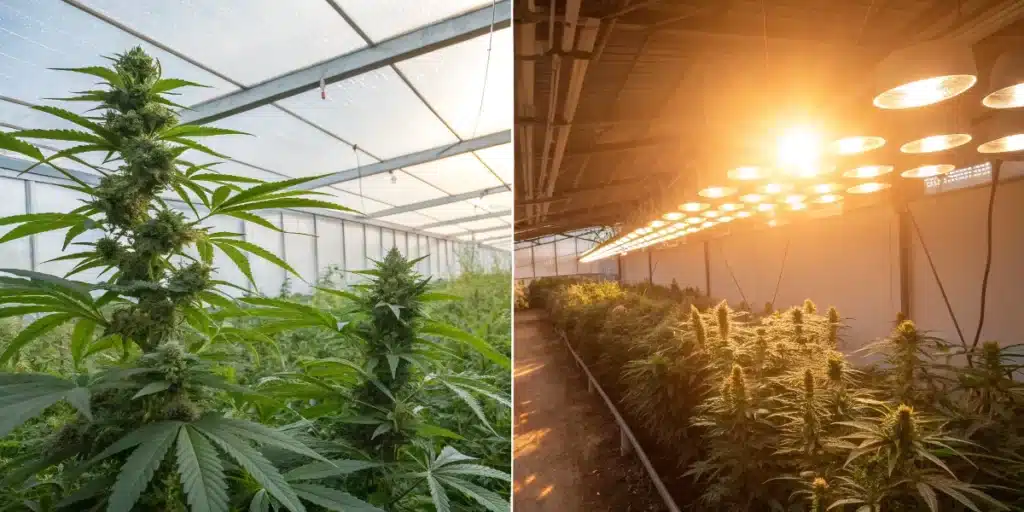
Greenhouse Weed vs Indoor Weed: Pros, Cons, and Potency
Greenhouse Weed vs Indoor Weed: Benefits and Limitations
Growing cannabis in a greenhouse provides a unique blend of benefits and challenges. One of the primary advantages is the ability to harness natural sunlight, which contributes to the plant’s growth and potency. Greenhouses offer a controlled environment where temperatures and humidity can be managed, minimizing adverse weather conditions. This setup can lead to robust plant health and a more abundant yield compared to outdoor cultivation, especially when evaluating Greenhouse Weed vs Indoor Weed performance.
However, greenhouse growing isn’t without its limitations. The initial investment for setting up a greenhouse can be significant. Additionally, while greenhouses protect plants from pests and harsh weather, they may still be susceptible to certain diseases. This means growers must remain vigilant and proactive in their care routines. Understanding these benefits and limitations will help clarify the greenhouse vs indoor potency debate.
Recommended Strains
Blue Cheese
|
|
THC | 16% - 20% (Medium) |
|
|
Type | Feminized |
|
|
Yield | High |
|
|
Phenotype | 80% Indica / 20% Sativa |
Blue Amnesia Auto
|
|
THC | 17% - 18% (Medium) |
|
|
Type | Autoflowering |
|
|
Yield | Low |
|
|
Phenotype | 40% Indica / 60% Sativa |
Natural Light Utilization
Natural light is a game-changer in greenhouse cannabis cultivation. Plants thrive under the sun’s UV rays, which not only promote healthy growth but also enhance cannabinoid and terpene production. Unlike indoor setups that rely heavily on artificial lighting, greenhouses allow plants to absorb the full spectrum of sunlight throughout their growth cycle a key point in the ongoing Greenhouse Weed vs Indoor Weed debate.
This natural light exposure can lead to more vibrant and aromatic buds, as they develop in a way that mimics their natural environment. Moreover, the cost savings on electricity can be substantial, making greenhouse cultivation a more economical choice in the long run. Still, when comparing Greenhouse Weed vs Indoor Weed, it’s important to consider how reliance on seasonal sunlight requires strategic planning to achieve optimal results.
Promos & Deals
Indoor Growing Insights
Control and Consistency
One of the most compelling aspects of indoor cannabis growing is the level of control it offers. Growers can manipulate every aspect of the growing environment, from temperature and humidity to light cycles. This precision allows for consistency in growth and potency, which is especially appealing for those looking to produce high-quality cannabis on a commercial scale.
With indoor setups, growers have the flexibility to experiment with different strains and growing techniques. This adaptability can lead to unique flavor profiles and effects, making it a popular choice among connoisseurs. However, the need for constant monitoring and adjustment can be demanding, requiring a significant time commitment and technical knowledge.
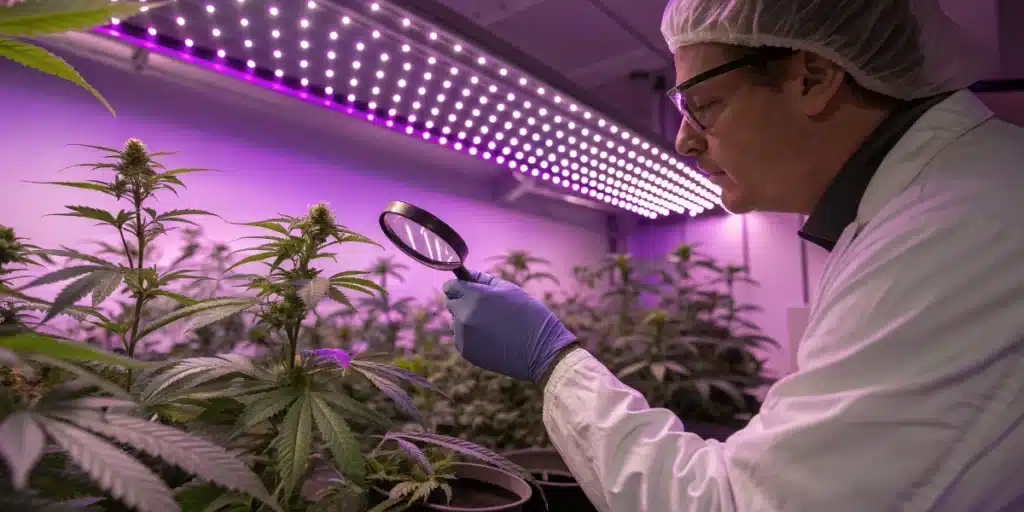
Technology and Equipment
Indoor cannabis cultivation often relies on cutting-edge technology to optimize plant health and yield. Advanced lighting systems, hydroponic setups, and climate control devices are just a few examples of the equipment that can enhance the indoor growing experience. This technological advantage can result in higher potency and better overall plant health when done correctly.
However, the reliance on technology comes with its own set of challenges. The initial investment in equipment can be steep, and maintaining these systems requires ongoing knowledge and expertise. Growers must stay informed about the latest advancements to ensure they are utilizing the best practices for their indoor environments.
Comparative Potency Analysis Greenhouse Weed vs Indoor Weed
THC and CBD Levels
When comparing Greenhouse Weed vs Indoor Weed, a critical factor to consider is the potency of the final product. THC and CBD levels are often the benchmarks for determining quality in cannabis. Greenhouse-grown cannabis typically boasts higher THC concentrations due to its exposure to natural sunlight and a more varied nutrient profile.
Indoor-grown cannabis, while potentially having lower THC levels, can still be highly potent thanks to the controlled environment. Growers can fine-tune nutrient delivery and light exposure to maximize cannabinoid production. This difference in cultivation methods can lead to unique profiles in both THC and CBD, appealing to different consumer preferences.
The nuances of potency also extend to the entourage effect, where the combination of cannabinoids and terpenes work together to create specific effects. For those deciding between Greenhouse Weed vs Indoor Weed, understanding these differences can help make more informed choices about the ideal product for their needs.
Overall Plant Health
Overall plant health is a crucial aspect of the greenhouse vs indoor potency debate. Greenhouse cultivation often results in stronger, more resilient plants due to their natural growing conditions. The ability to absorb sunlight and access fresh air contributes to a robust root system, which is essential for nutrient uptake and overall vigor.
On the other hand, indoor plants can suffer from issues related to artificial environments, such as light stress or nutrient deficiencies. However, when managed correctly, indoor plants can thrive, leading to high-quality buds. The key lies in the grower’s ability to maintain a balance between the various environmental factors and plant needs.
Ultimately, the choice between greenhouse and indoor growing methods may come down to personal preferences and specific goals. Whether prioritizing the benefits of natural sunlight or the precision of controlled environments, understanding the implications on potency and plant health is essential.
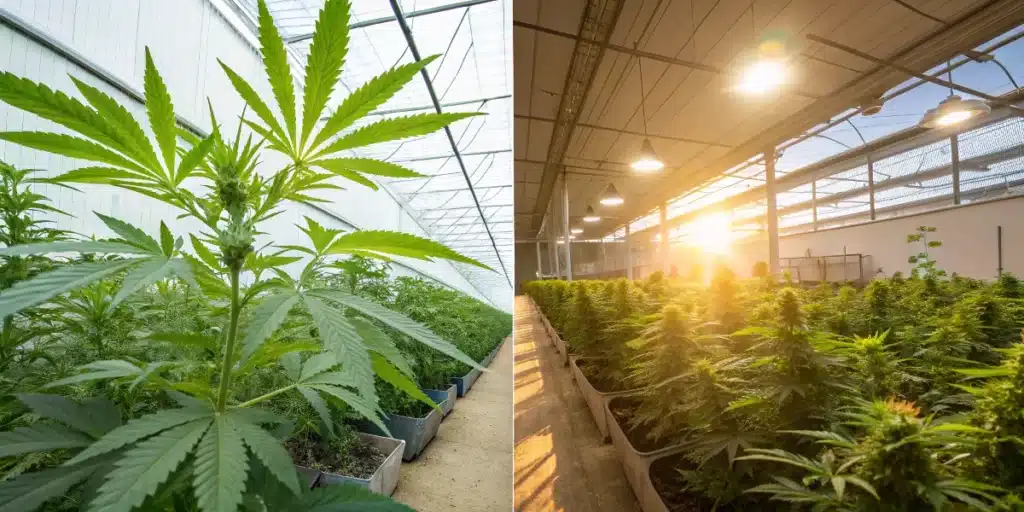
Best Strains for Greenhouse Weed Vs Indoor Weed
3 Good Cannabis Strains for Greenhouse Growing
Choosing the right strain for greenhouse cultivation can make a huge difference in your results. You want genetics that thrive under natural sunlight, are resilient to minor environmental fluctuations, and take full advantage of the extended growing season a greenhouse offers. Here are three powerhouse strains that check all those boxes:
- Blue Dream
This legendary hybrid is a favorite among greenhouse growers thanks to its vigorous growth and high yield potential. Blue Dream enjoys the natural light of a greenhouse environment and rewards growers with sweet, berry-scented buds and a euphoric high. Its sativa-dominant genetics stretch tall and wide, making use of all the vertical space a greenhouse can provide. - Super Silver Haze
A greenhouse classic, Super Silver Haze thrives in warm, semi-controlled environments. With its strong resistance to mold and pests, it’s well-suited to the fluctuating humidity often found in greenhouses. Expect a creative, cerebral high and long, resin-covered colas that love soaking up the sun. - Critical Mass Auto
If you’re looking for sheer productivity, Critical Mass is your go-to strain. It’s a fast finisher, highly productive under greenhouse conditions, and produces extremely dense buds. Thanks to its indica-heavy genetics, it stays relatively compact while delivering knockout potency and a deep, relaxing body high.
3 Good Cannabis Strains for Indoor Growing
Indoor growers have the luxury of precision and control, which opens the door to strains that demand more tailored care but also reward you with unmatched quality and consistency. The strains below are well-suited to the controlled conditions of indoor environments and produce premium flower when grown under artificial light:
- Gorilla Glue #4 (GG4)
One of the most potent strains for indoor setups, GG4 thrives in hydro or soil environments with tight humidity control. With its frosty appearance and knock-out potency, this hybrid is a heavy-hitter that delivers sticky buds and a strong, euphoric high perfect for seasoned smokers. It performs exceptionally well under intense LED lighting setups. - Z OG
Z OG is a fruity, vibrant indica-dominant strain that benefits from the consistent lighting and climate control of indoor growing. Its terpene-rich profile makes it a favorite for those looking to enhance flavor and aroma indoors. Growers love its moderate size, making it ideal for grow tents and limited space environments. - White Widow
This classic strain is one of the most reliable performers indoors. White Widow’s balanced hybrid nature means it grows with uniformity, produces thick trichome-coated buds, and responds beautifully to training techniques like SCROG. With a spicy, earthy aroma and a balanced high, it’s a staple in many indoor gardens for a reason.
FAQS
What are the main differences between greenhouse weed and indoor weed?
The primary differences between greenhouse weed and indoor weed lie in the cultivation environment, light source, and control over growing conditions. Greenhouse weed benefits from natural sunlight, while indoor weed relies on artificial lighting and precise environmental controls.
Which method produces higher potency cannabis?
Both greenhouse and indoor methods can yield high potency cannabis, but greenhouse-grown cannabis often benefits from natural sunlight, which may enhance THC levels. Indoor cultivation can achieve high potency through controlled conditions and advanced growing techniques.
Is one method more cost-effective than the other?
Greenhouse cultivation can be more cost-effective due to lower energy costs from natural sunlight. However, initial setup costs can be high for both methods, and ongoing maintenance varies depending on the technology used in indoor growing.


